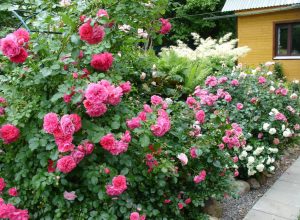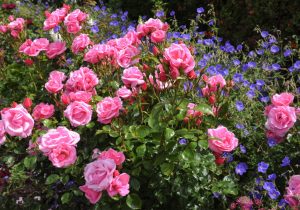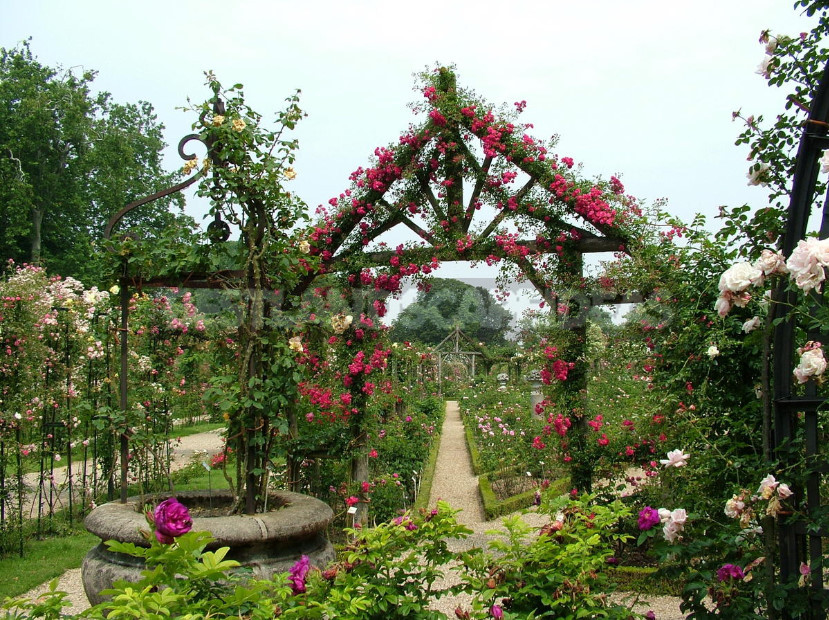
Quite often you can hear the opinion that the classic regular style of rosaries is not suitable for our conditions. The arguments against it are usually the following.
First, very high labor intensity. If mixborders some untidy is excusable and can even give the garden a certain charm, a kind of mood running my grandmother’s garden, the regular style of these liberties is unforgiving: jagged edge the lawn, overgrown borders, weeds will be evident and spoil all impression.
Secondly, the limited season of decoration. Roses, of course, very are beautiful, but only until are in bloom. Until the end of June, when the earliest varieties begin to bloom, the garden of some roses will look boring.
Third, in the monoculture of the rose more common, as more conditions for the spread of disease.
There is a natural question-and why in General it is necessary? Is it not better to more free mixed planting in combination with perennials, flowing lines instead of straight corners?
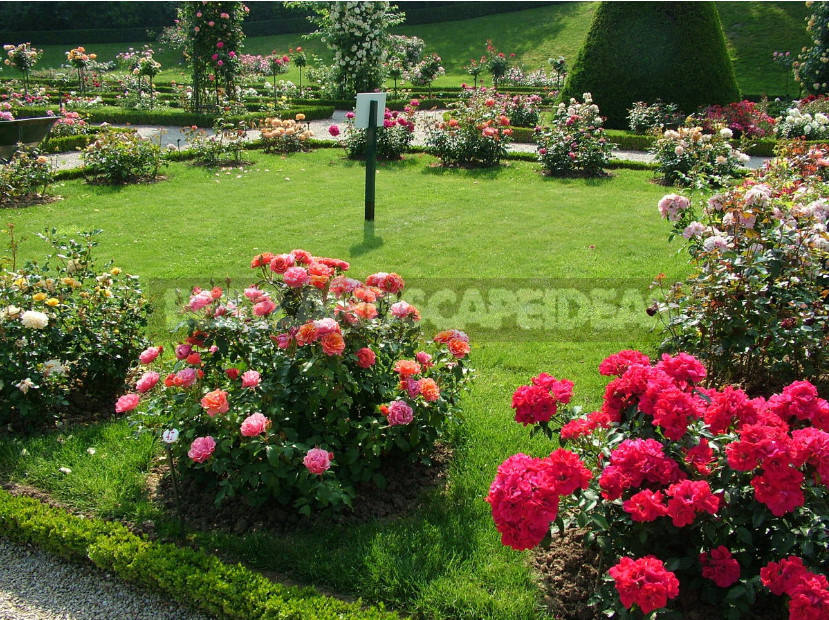
I’ve never been a supporter of the classic formal rose gardens. For some reason there were always associations with the camp: rectangular flower beds planted with red tea-hybrid roses, a lot of bare land. Until now, I think that it is not necessary to do your garden completely regular — you will quickly get bored. However, some elements may well be adopted. What can be interesting for an ordinary gardener regular style?
Picture frame
Imagine a typical rose Bush. Inexpressive most often foliage; mass of shoots growing as they want-in different directions; shapeless Bush, often bare at the base. Nothing in common with elegant “fountain” miscanthus or simply sculptural hosts. Slightly better looking bushes of old varieties, some modern varieties of shrabs and English roses-David Austin specifically selects varieties, beautiful not only flowers, but also the shape of the Bush. But in General, we admit, rose-not the most beautiful plant until it blooms. Amorphous shapeless Bush need to beat, to shade, to hide weaknesses, “bare feet” cover.
Regular style in the garden is good for its structure, decoration. By limiting the mass of colors to clear geometric boundaries, we will create a “frame for the picture.” Roses growing on a flowerbed of a simple rectangular shape, limited by a cut border (which, by the way, closes the bottom of the bushes!) or just a flat strip of lawn, look really very impressive. And if the direct rigid bushes hybrid tea roses or floribunda, the result of too formal and not to everyone’s taste, from the more elegant modern varieties of shrubs, groundcover or English rose justifies itself on all hundred percent. And why not do the same with a mixed landing?
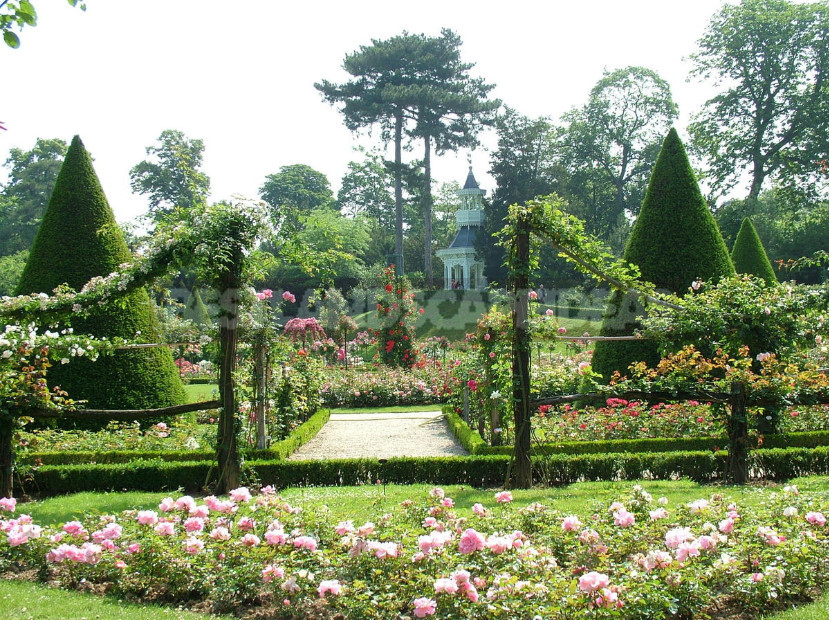
Not only roses need “frames”. Another distinctive feature of the regular garden — sheared figures. Boxwood borders, cones and balls are the hallmark of almost any formal rosary. However, the balls of boxwood are often used in free landings-they are placed directly in a lot of colors, sometimes one by one, sometimes in small groups. This is a wonderful accent, a kind of “counterweight”, a pole of tranquility among the riot of colors.
Cut the borders a few meters long every couple of weeks, of course, too dreary, but a couple of such “balls” — it is possible. The third borrowing from regular gardens-a lot of lawns and generally green. No, of course, lawns are used in any garden, but it is in regular lawn rosaries so much, and it is the lawn that serves as the background for roses, not the surrounding perennial plantings.
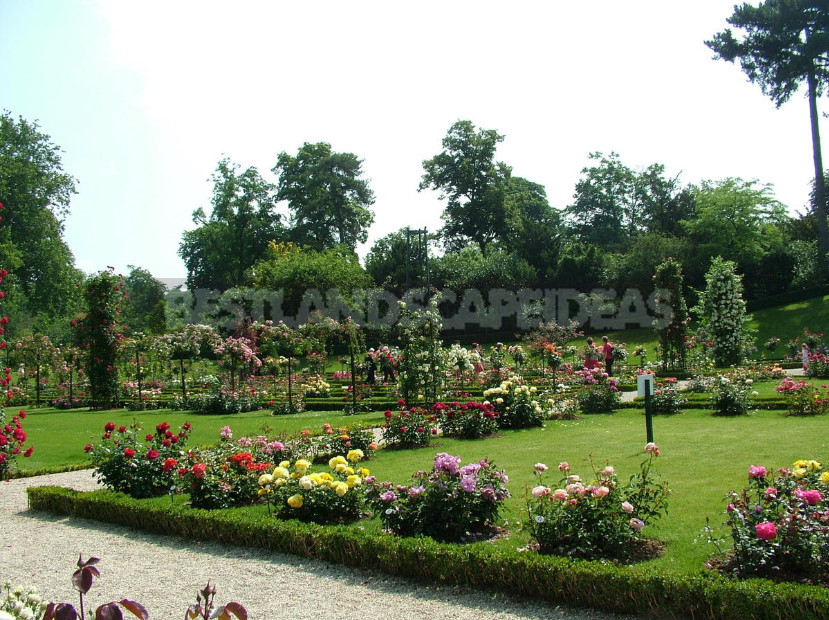
I can not explain why, but roses of any color look particularly impressive on an emerald green background. Perhaps the fact is that on a flat green surface of the eye rests, and the mass of flowers with their riot of colors and a variety of shapes and textures is balanced by it, but the fact remains. Try to “draw” a flowerbed of roses on the background of, say, gravel or paving and the same — but on the background of smooth cut grass. The second option is definitely more advantageous! Perhaps not least the lawns obliged garden bagatelle in Paris to his title of one of the most spectacular classic rose gardens.
Third dimension
So, the structure and graphics, which is so lacking roses in our garden has already appeared, but the picture is still flat. To become a three-dimensional garden, you need a third dimension. It is the formal style that we owe to the existence of various elements of vertical gardening — pergolas, trellis, arches, obelisks, entwined with roses, literally transform the appearance of the garden during the season. This is especially true for young gardens, where there are no large trees.
There are many such vertical elements, and I will dwell on them in more detail.Perhaps the most significant impact on the appearance of the garden — pergolas. One of the oldest structures, invented in ancient Italy, in the classic version is two rows of pillars (wooden, stone or brick) along the track, connected at the top of the longitudinal and transverse wooden beams.

The rose-covered pergola helps to divide the space in the garden into several “green rooms”, gives shade and makes the garden more interesting in General. When planning such a design, it is necessary to take into account several points.
First, for pergolas need quite a lot of space to not cling to the thorns of roses-at least 2 m in width and height. Shadow design gives a lot, and therefore should have a pergola so that the roses were well lit-that is, from North to South. Do not plant the plants too tightly so that the air can circulate freely between the bushes. In addition, the pergola should not lead “to nowhere” — usually at the far end set a beautiful sculpture or plant a stamp rose.
Another caveat: for planting on the pergola is better to choose roses from a group of single — flowering Ramblers, because they are flexible shoots that are easy to direct, and powerful growth-these are the only roses that in our climate will get to the roof of the pergola.
Of course, all described — an option for a large garden. For a small rose garden such a design is too bulky, but for this there are many modifications of the classic pergola. Pergola, leaning one side on the wall of the house, will create a shady area to relax in the heat. A small pergola can be installed above the bench-get a cozy gazebo.

Widely known and popular among us support for the rose — arch. Many ready-made arches are also available for purchase, but unfortunately, good design is rare among them. Most of the arches are too narrow and low, under them uncomfortable to walk, they are flimsy, easy to break and painted in bright green and sometimes white. Narrow purchase arch is good to put just as a decoration, for example, to the fence, where no one will go under it, and repainted in the color of old bronze to poisonous greenery is not dissonant in the garden of its artificiality.
If you have the necessary skills and apparatus for welding the arch or the whole arcade above the track is easy to weld from the reinforcement — it is more durable and, importantly, an inexpensive alternative to purchased arches, in addition, it can be made exactly the size as you need. Unlike pergola, arcade-more air and easy option, passes a lot of light, which means you do not need to Orient the track in a certain direction to achieve good illumination of roses. At the base of the supports can be planted to the watery and low groundcover roses or floribunda roses.
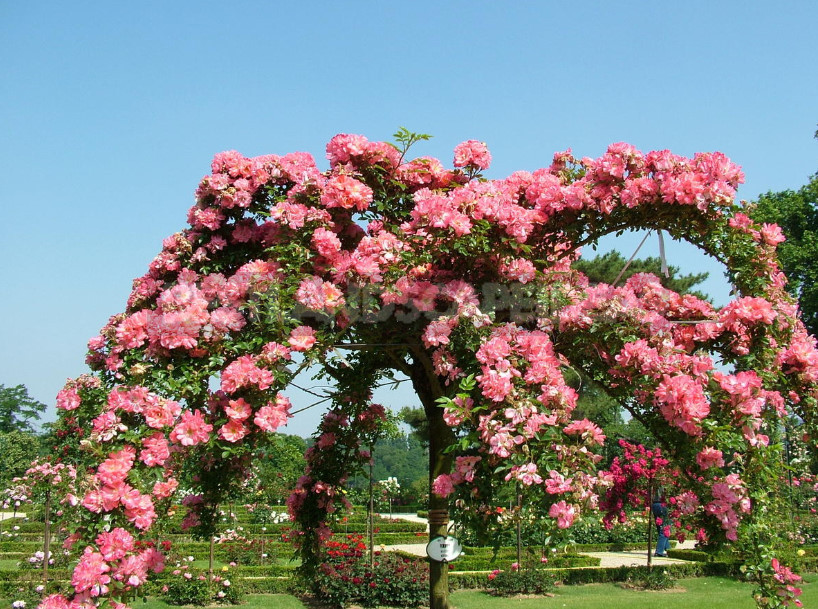
Another very effective version of the classic support for roses, we have almost unknown-pillars, between which hang ropes or chains in the form of festoons. This support can be installed not only along the track, but also in the background of the flower garden. Ropes should be heavy enough to keep the form of festoons under the weight of roses, so often instead of this rope hang metal chains, wrapped with a rope.
Obelisks and pyramids, entwined with roses, are used here quite often, but, as a rule, they are too low and only look out over the total mass of plants in the flower bed. In classical gardens the obelisks are much higher, they can reach 3 m in height-real exclamation marks of the garden! Especially spectacular against the blue sky yellow rose varieties.
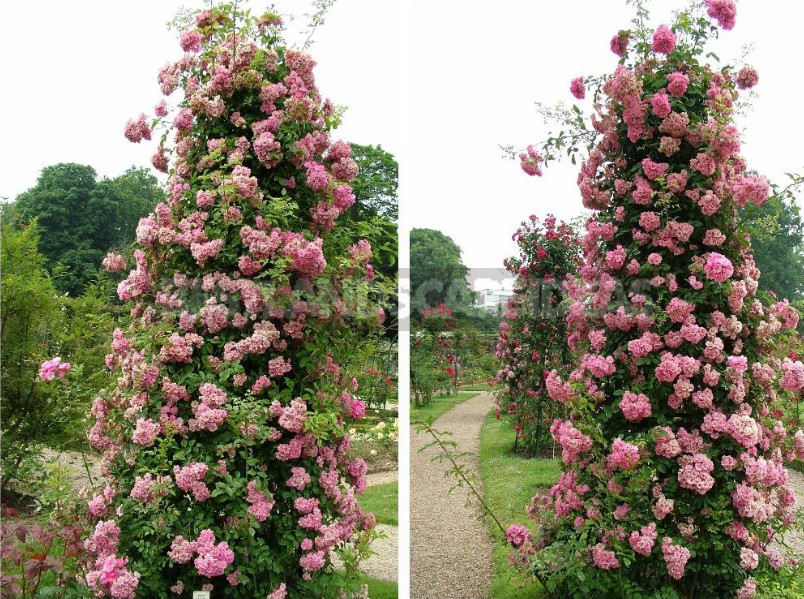
Finally, the last element of the regular style, which I would like to touch-a combination of roses with water. We use it offensively is rarely — probably due to technical difficulties with the manufacture of the reservoir and further care. But if you can arrange a fountain in the rose garden or a small pond (round or rectangular) — try it for sure, it’s worth it.
To make your rosary entirely regular, of course, bust. However, looking at the best rose gardens of France, made in this style, involuntarily think: perhaps a regular flower garden dedicated only to roses, it’s not such a bad idea?
